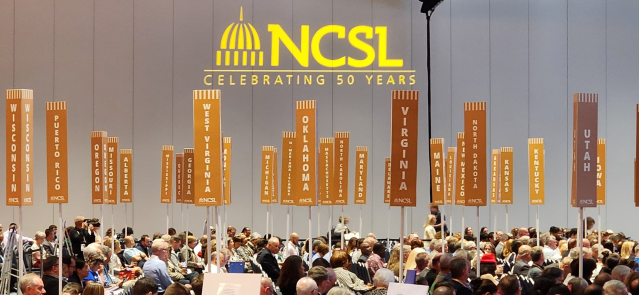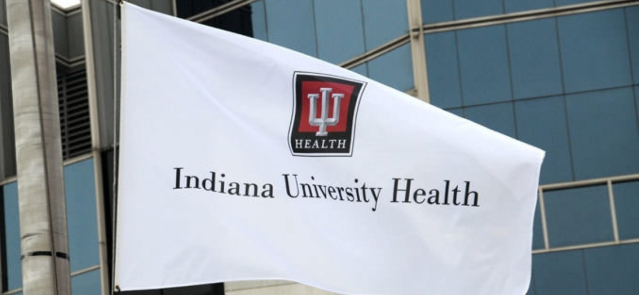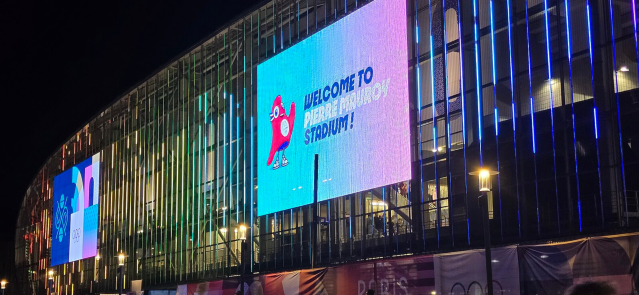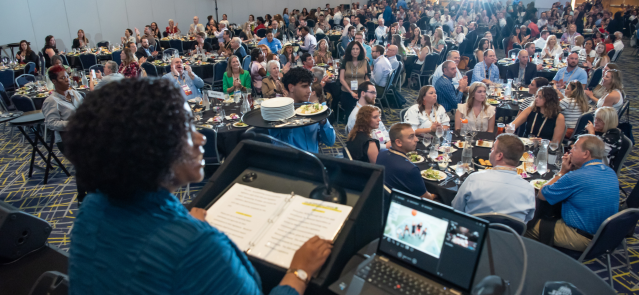Stay ahead of the curve as a political insider with deep policy analysis, daily briefings and policy-shaping tools.
Request a DemoLUCHA Welcomes Vice President Kamala Harris to Arizona – LUCHA Internal Polling Shows Vice President Harris in a Statistical Tie in AZ
Weekend Freeway Travel Advisory (Aug. 9-12) – Phoenix Area
- Northbound I-17 closed at Jomax Road in north Phoenix from 10 p.m. Friday to 5 a.m. Monday (Aug. 12) for pavement improvements. Northbound I-17 narrowed to one lane between Jomax Road and Loop 303. Northbound I-17 on-ramp at Happy Valley Road closed. Westbound Jomax Road closed near I-17. Allow plenty of extra travel time. Primary Detour: Northbound I-17 traffic will use the off- and on-ramps at Jomax Road. Please stay on the primary freeway detour and avoid using nearby streets. Note: Consider traveling during early morning or later at night.
- Westbound I-10 closed between US 60 (Superstition Freeway) and State Route 143 (Hohokam Expressway) from 10 p.m. Friday to 4 a.m. Monday (Aug. 12) for construction. Westbound I-10 on-ramps at Elliot, Baseline and Broadway roads closed. Detours: Consider exiting westbound I-10 to eastbound Loop 202 (Santan Freeway) or eastbound US 60 to reach northbound Loop 101 (Price Freeway) and westbound Loop 202 (Red Mountain Freeway) in the Tempe area. Note: Drivers in the southeast Valley/Chandler area can consider using westbound/northbound Loop 202 (South Mountain Freeway) as an alternate route. For more information visit i10BroadwayCurve.com. Note: Eastbound I-10 narrowed to three lanes between 40th and 48th streets from 8 p.m. Friday to 4 a.m. Monday (Aug. 12). Eastbound I-10 on-ramp at 40th Street closed (consider using the eastbound on-ramp at Broadway Road). Southbound 48th also closed between I-10 and Broadway Road.
- Westbound US 60 (Superstition Freeway) closed between Loop 101 (Price Freeway) and I-10 from 9 p.m. Friday to 5 a.m. Monday (Aug. 12) for pavement maintenance. Westbound US 60 on-ramps at Alma School and Dobson roads also closed. Detour: Alternate routes include northbound Loop 101 to westbound Loop 202 (Red Mountain Freeway) to approach Sky Harbor Airport or the downtown Phoenix area.
- Eastbound Loop 202 (Santan Freeway) closed between Loop 101 (Price Freeway) and Arizona Avenue in Chandler from 10 p.m. Friday to 5 a.m. Monday (Aug. 12) for freeway widening project. Detours: Consider alternate routes including eastbound Chandler Boulevard or Germann Road.
- Northbound Loop 101 (Pima Freeway) closed at Frank Lloyd Wright Boulevard from 10 p.m. Friday to 5 a.m. Monday (Aug. 12) for bridge work. Northbound Loop 101 on-ramps at Shea Boulevard, Cactus Road and Raintree Drive closed. Detour: Traffic will detour on the northbound frontage road to the on-ramp at Princess Drive/Pima Road.
- Northbound State Route 51 narrowed to one lane (HOV lane open) between Glendale Avenue and Shea Boulevard from 9 p.m. Friday to noon Saturday (Aug. 10) for pavement maintenance. Northbound SR 51 on-ramps at Glendale and Northern avenues both closed. Allow extra travel time. Detour: Consider alternate routes including northbound Seventh Street to northbound Cave Creek Road and eastbound Cactus Road.
- Ramp Closure Alert: Eastbound I-10 off-ramp at 48th Street/SR 143 closed until late fall (starting at 8 p.m. Friday, Aug. 9) for reconfiguration as part of the I-10 Broadway Curve Improvement Project. Detour: Consider alternate routes including the eastbound I-10 exit at Broadway Road. Note: Northbound 48th Street closed between Broadway Road and I-10 from 8 p.m. Friday (Aug. 9) to September.
Pima County launches new online parks and recreation reservation system
NCSL: How have elections changed since 2020?
Four years after the 2020 election spawned countless challenges, concerns and conspiracy theories — and on the brink of another presidential contest — how have election policies changed?
Dozens of lawmakers, election officials and staffers gathered to discuss that question and others during a five-plus-hour session Thursday, the day after the bulk of the annual National Conference of State Legislatures summit wrapped up.
Charles Stewart III, a political scientist at the Massachusetts Institute of Technology, explored how the COVID-19 pandemic affected policies before and after the 2020 election.
The early pandemic saw many state primaries being pushed back, coupled with a massive expansion in voting by mail.
“Not surprisingly … there were a lot of problems,” Stewart said, including rejected ballots and concerns with postal service and reporting delays.
Before the pandemic, the share of in-person voters gradually decreased from 89% in the late 1990s to 60% by 2018, Stewart said. But in 2020, for the first time in the nation’s history, less than half of all voters cast ballots at polling booths.
There was also a sharp partisan divide between those who voted by mail and those who voted on Election Day: More Democrats voted by mail, while more Republicans voted in person. Voting patterns returned to their previous trend in 2022, though mail voting was still higher than in the pre-pandemic period.
“Issues of auditing became front and center and are a secret, silent issue that’s going to continue into the present,” Stewart said, as did the issue of counting speed, or how fast unofficial results were reported on election night.
He said voters from the party in power in a state were historically more trusting than the party out of power. In 2020, however, Republicans everywhere were more distrustful of election results, particularly in battleground states and states with high mail voting. That pattern eased a bit in 2022, except in Arizona and Pennsylvania.
The biggest correlation? Stewart said people who felt their own polling place was run well were significantly more likely to trust the election results, both locally and nationally.
“There is one thing in control of election administrators: running a good election,” he said.
Several experts outlined their best strategies on how to run a good election — and how to reassure voters that elections are secure.
There are more than 10,000 election jurisdictions nationwide, each with different policies and procedures, according to Tammy Patrick, chief program officer for the National Association of Election Officials.
Just 8% of election offices serve 75% of the nation’s voters because many dense urban areas have only one jurisdiction.
Transparency is important, Patrick said, but a paradox exists because officials can’t reveal everything — such as security procedures — because it would open election systems to foreign threats.
In the run-up to the 2024 general election, Patrick expects foreign adversaries to attempt to undermine confidence in the election system.
Elected officials can build voter trust in the election process in three key ways, said Matt Germer, director of the governance program at the R Street Institute, a free-market think tank:
- Publicly affirm the security and integrity of American elections.
- Use transparency and public outreach to drive public confidence.
- Champion policy changes in the spirit of continuous improvement.
Officials shouldn’t intentionally raise the stakes during debates over election bills by implying elections wouldn’t be secure without reforms, Germer said.
Former Colorado Secretary of State Wayne Williams said the keys to establishing trust include publishing rules and guidelines in advance, using voter-verifiable paper ballots and sharing information as soon as possible.
The more delays there are during the reporting process, the more time there is for people to speculate and spread conspiracy theories. Williams encouraged officials to be as transparent and open as possible.
“The hardest thing to defend is, ‘They wouldn’t let me see,’” he said.
Officials should listen to and attempt to respond to every question, Williams said, adding that “not every question is an insurrection.”
“I may never persuade the hardcore zealots on either side,” he said, “but who I want to persuade is the people who hear them.”
Heather Balas, vice president of Election Reformers Network, said her organization has developed an online toolkit to help election officials communicate with the media and the public during elections that go into “overtime” — ones with narrow margins and hotly contested legal disputes.
Word choice can have a big impact, Germer said, such as the rhetorical difference between “purging” voter rolls versus “list maintenance.”
“The trust in a system is impacted by elites and the way they talk about it,” he said.
Brett Stover is a Statehouse reporter at State Affairs Pro Kansas/Hawver’s Capitol Report. Reach him at [email protected] or on X @BrettStoverKS.
Rokita’s office drops suit against IU Health over Bernard allegations
The state Attorney General’s Office has dropped a federal lawsuit in which the office claimed Indiana University Health failed to enforce patient privacy laws regarding Dr. Caitlin Bernard’s disclosure that she had provided an abortion to a 10-year-old rape victim.
A federal judge on Thursday accepted the dismissal notice filed this week by the Attorney General’s Office in the lawsuit that was filed last September.
The dismissal notice cited several steps for additional employee training that it said IU Health had taken since July 2022 “in satisfaction of the deficiencies” alleged in the lawsuit filed against the state’s largest hospital system.
“Considering IU Health’s actions as verified from discovery during this litigation, including the most recent supplements, the State and judicial resources are better served on other matters,” the filing by the Attorney General’s Office said.
IU Health said it did not violate privacy laws and has maintained “robust” employee training on such regulations for years.
“We are disheartened by the suggestions made in the Indiana Attorney General’s Notice of Dismissal that implied corrective action was required by IU Health and stand behind our statements that Dr. Bernard was compliant with privacy laws,” IU Health said in a statement Friday. “While we are pleased the Indiana Attorney General’s office voluntarily moved to dismiss the case, we are disappointed the state’s limited taxpayer resources were put toward this matter after the first complaint was dismissed by the Court on the merits.”
Action to close the case ends an attempt by the Attorney General’s Office to revive the lawsuit after U.S. District Court Judge Matthew Brookman in June sided with IU Health’s request to throw it out.
Brookman wrote then that he would “not stretch the facts to fit the theory advanced by the State.”
“Here, there are no factual allegations from which the Court can reasonably infer that IUH’s policies, or lack thereof, have created an identifiable impending or ongoing threat to Indiana residents’ privacy interests,” Brookman wrote.
Attorney General Todd Rokita said in September that the lawsuit stemmed from IU Health’s failure to properly report, review and enforce federal and state patient privacy laws.
Rokita and IU Health were at odds over the hospital system’s determination that Bernard did not violate privacy laws when she told an Indianapolis Star reporter that she had provided an abortion to the Ohio girl in July 2022 soon after tighter abortion restrictions took effect in that state.
Indiana’s Medical Licensing Board reprimanded Bernard for violating patient privacy laws but dismissed more serious allegations pursued by Rokita’s office.
The Indiana Supreme Court, meanwhile, issued a professional misconduct reprimand against Rokita over comments he made disparaging Bernard during a Fox News interview.
Representatives for Bernard did not immediately respond Friday to a request for comment on the lawsuit’s dismissal.
Update: This story has been updated to include comment from IU Health.
Tom Davies is a Statehouse reporter for State Affairs Pro Indiana. Reach him at [email protected] or on X @TomDaviesIND.
Indiana: The sports capital of America
EVANSVILLE, Ind. — There’s something inherently paradoxical about Indiana — a state that, on the surface, might appear as just another quiet Midwestern enclave, yet pulses with an athletic prowess that defies its modest size. As the Olympics play out on the global stage, this humble state finds itself in an unlikely position: leading the charge as the sports capital of the United States.
Consider this: With just 6 million people, Indiana has secured 15 Olympic medals this year. If “Team Indiana” were its own country, it would rank 12th in the medal standings, ahead of nations like India, Indonesia and Pakistan, whose combined populations total 2.4 billion but have collectively earned fewer medals. How is it that this small state, often overlooked in the grand narratives of American life, has achieved such extraordinary athletic success?
The answer, I believe, lies in the very fabric of Indiana’s identity — a tapestry woven with threads of grit, community and an almost stubborn dedication to excellence. There’s a certain tenacity here, a refusal to be defined by limitations of size or geography. Indiana, after all, is a place where high school basketball games can fill arenas larger than those of many small colleges. It’s a place where the echoes of the Indianapolis 500, a race that has captivated the world since 1911, resonate as a symbol of endurance and innovation.
Indiana is home to eight of the 10 largest high school basketball gyms in the country, and its residents fill them to the rafters week after week, year after year. The Indianapolis 500 alone attracts over 300,000 spectators annually, making it the largest single-day sporting event in the world. And let’s not forget the NCAA — headquartered in Indianapolis — where Indiana universities and colleges have claimed dozens of national championships across various sports. This is not just a state that participates; this is a state that dominates, setting a standard that the rest of the country can only aspire to reach.
Yet, Indiana’s claim to being America’s sports capital is not merely about numbers or events. It’s about the way sports are integrated into the daily lives of its people. This state doesn’t just host sporting events; it lives them. Lucas Oil Stadium and Bankers Life Fieldhouse aren’t just venues — they are temples of modern athleticism, drawing thousands of pilgrims each year to witness the spectacle of human competition.
But there’s a deeper story here, one that goes beyond the arenas and medals. Indiana’s success in sports is a reflection of a broader cultural phenomenon — a microcosm of the American spirit itself. In this state, we see the embodiment of a certain kind of American idealism: the belief that with enough hard work, discipline and community support, anything is possible. It’s the same ethos that has driven generations of Americans to strive for greatness, often against impossible odds.
In Indiana, sports are more than just games — they are a communal ritual, a shared experience that binds people together across social and economic divides. Whether it’s the roar of the crowd at an NCAA Final Four or the quiet determination of a high school athlete in a dusty gym, there’s a sense that sports here are about something more profound than victory or defeat. They are about identity, about belonging, about finding meaning in the collective pursuit of excellence.
And it is this, perhaps, that makes Indiana the true sports capital of America. Not the medals or the stadiums, but the spirit of the place — a spirit that refuses to be confined by the boundaries of the state or the expectations of the outside world. In a time when much of the country seems divided and fragmented, Indiana offers a different vision: one of unity, of shared purpose and of the quiet strength that comes from knowing who you are and what you stand for.
As the world watches the Olympics, it might do well to look a little closer at Indiana. For in this small, unassuming state, we find not only a sports powerhouse but also a reminder of what it means to be American — resilient, determined, and always reaching for something greater.
Joshua Claybourn is an attorney and author in Evansville, Indiana. Visit him at JoshuaClaybourn.com.
NCSL: How have elections changed since 2020?
Four years after the 2020 election spawned countless challenges, concerns and conspiracy theories — and on the brink of another presidential contest — how have election policies changed?
Dozens of lawmakers, election officials and staffers gathered to discuss that question and others during a five-plus-hour session Thursday, the day after the bulk of the annual National Conference of State Legislatures summit wrapped up.
Charles Stewart III, a political scientist at the Massachusetts Institute of Technology, explored how the COVID-19 pandemic affected policies before and after the 2020 election.
The early pandemic saw many state primaries being pushed back, coupled with a massive expansion in voting by mail.
“Not surprisingly … there were a lot of problems,” Stewart said, including rejected ballots and concerns with postal service and reporting delays.
Before the pandemic, the share of in-person voters gradually decreased from 89% in the late 1990s to 60% by 2018, Stewart said. But in 2020, for the first time in the nation’s history, less than half of all voters cast ballots at polling booths.
There was also a sharp partisan divide between those who voted by mail and those who voted on Election Day: More Democrats voted by mail, while more Republicans voted in person. Voting patterns returned to their previous trend in 2022, though mail voting was still higher than in the pre-pandemic period.
“Issues of auditing became front and center and are a secret, silent issue that’s going to continue into the present,” Stewart said, as did the issue of counting speed, or how fast unofficial results were reported on election night.
He said voters from the party in power in a state were historically more trusting than the party out of power. In 2020, however, Republicans everywhere were more distrustful of election results, particularly in battleground states and states with high mail voting. That pattern eased a bit in 2022, except in Arizona and Pennsylvania.
The biggest correlation? Stewart said people who felt their own polling place was run well were significantly more likely to trust the election results, both locally and nationally.
“There is one thing in control of election administrators: running a good election,” he said.
Several experts outlined their best strategies on how to run a good election — and how to reassure voters that elections are secure.
There are more than 10,000 election jurisdictions nationwide, each with different policies and procedures, according to Tammy Patrick, chief program officer for the National Association of Election Officials.
Just 8% of election offices serve 75% of the nation’s voters because many dense urban areas have only one jurisdiction.
Transparency is important, Patrick said, but a paradox exists because officials can’t reveal everything — such as security procedures — because it would open election systems to foreign threats.
In the run-up to the 2024 general election, Patrick expects foreign adversaries to attempt to undermine confidence in the election system.
Elected officials can build voter trust in the election process in three key ways, said Matt Germer, director of the governance program at the R Street Institute, a free-market think tank:
- Publicly affirm the security and integrity of American elections.
- Use transparency and public outreach to drive public confidence.
- Champion policy changes in the spirit of continuous improvement.
Officials shouldn’t intentionally raise the stakes during debates over election bills by implying elections wouldn’t be secure without reforms, Germer said.
Former Colorado Secretary of State Wayne Williams said the keys to establishing trust include publishing rules and guidelines in advance, using voter-verifiable paper ballots and sharing information as soon as possible.
The more delays there are during the reporting process, the more time there is for people to speculate and spread conspiracy theories. Williams encouraged officials to be as transparent and open as possible.
“The hardest thing to defend is, ‘They wouldn’t let me see,’” he said.
Officials should listen to and attempt to respond to every question, Williams said, adding that “not every question is an insurrection.”
“I may never persuade the hardcore zealots on either side,” he said, “but who I want to persuade is the people who hear them.”
Heather Balas, vice president of Election Reformers Network, said her organization has developed an online toolkit to help election officials communicate with the media and the public during elections that go into “overtime” — ones with narrow margins and hotly contested legal disputes.
Word choice can have a big impact, Germer said, such as the rhetorical difference between “purging” voter rolls versus “list maintenance.”
“The trust in a system is impacted by elites and the way they talk about it,” he said.
Brett Stover is a Statehouse reporter at State Affairs Pro Kansas/Hawver’s Capitol Report. Reach him at [email protected] or on X @BrettStoverKS.
NCSL: How have elections changed since 2020?
Four years after the 2020 election spawned countless challenges, concerns and conspiracy theories — and on the brink of another presidential contest — how have election policies changed?
Dozens of lawmakers, election officials and staffers gathered to discuss that question and others during a five-plus-hour session Thursday, the day after the bulk of the annual National Conference of State Legislatures summit wrapped up.
Charles Stewart III, a political scientist at the Massachusetts Institute of Technology, explored how the COVID-19 pandemic affected policies before and after the 2020 election.
The early pandemic saw many state primaries being pushed back, coupled with a massive expansion in voting by mail.
“Not surprisingly … there were a lot of problems,” Stewart said, including rejected ballots and concerns with postal service and reporting delays.
Before the pandemic, the share of in-person voters gradually decreased from 89% in the late 1990s to 60% by 2018, Stewart said. But in 2020, for the first time in the nation’s history, less than half of all voters cast ballots at polling booths.
There was also a sharp partisan divide between those who voted by mail and those who voted on Election Day: More Democrats voted by mail, while more Republicans voted in person. Voting patterns returned to their previous trend in 2022, though mail voting was still higher than in the pre-pandemic period.
“Issues of auditing became front and center and are a secret, silent issue that’s going to continue into the present,” Stewart said, as did the issue of counting speed, or how fast unofficial results were reported on election night.
He said voters from the party in power in a state were historically more trusting than the party out of power. In 2020, however, Republicans everywhere were more distrustful of election results, particularly in battleground states and states with high mail voting. That pattern eased a bit in 2022, except in Arizona and Pennsylvania.
The biggest correlation? Stewart said people who felt their own polling place was run well were significantly more likely to trust the election results, both locally and nationally.
“There is one thing in control of election administrators: running a good election,” he said.
Several experts outlined their best strategies on how to run a good election — and how to reassure voters that elections are secure.
There are more than 10,000 election jurisdictions nationwide, each with different policies and procedures, according to Tammy Patrick, chief program officer for the National Association of Election Officials.
Just 8% of election offices serve 75% of the nation’s voters because many dense urban areas have only one jurisdiction.
Transparency is important, Patrick said, but a paradox exists because officials can’t reveal everything — such as security procedures — because it would open election systems to foreign threats.
In the run-up to the 2024 general election, Patrick expects foreign adversaries to attempt to undermine confidence in the election system.
Elected officials can build voter trust in the election process in three key ways, said Matt Germer, director of the governance program at the R Street Institute, a free-market think tank:
- Publicly affirm the security and integrity of American elections.
- Use transparency and public outreach to drive public confidence.
- Champion policy changes in the spirit of continuous improvement.
Officials shouldn’t intentionally raise the stakes during debates over election bills by implying elections wouldn’t be secure without reforms, Germer said.
Former Colorado Secretary of State Wayne Williams said the keys to establishing trust include publishing rules and guidelines in advance, using voter-verifiable paper ballots and sharing information as soon as possible.
The more delays there are during the reporting process, the more time there is for people to speculate and spread conspiracy theories. Williams encouraged officials to be as transparent and open as possible.
“The hardest thing to defend is, ‘They wouldn’t let me see,’” he said.
Officials should listen to and attempt to respond to every question, Williams said, adding that “not every question is an insurrection.”
“I may never persuade the hardcore zealots on either side,” he said, “but who I want to persuade is the people who hear them.”
Heather Balas, vice president of Election Reformers Network, said her organization has developed an online toolkit to help election officials communicate with the media and the public during elections that go into “overtime” — ones with narrow margins and hotly contested legal disputes.
Word choice can have a big impact, Germer said, such as the rhetorical difference between “purging” voter rolls versus “list maintenance.”
“The trust in a system is impacted by elites and the way they talk about it,” he said.
Brett Stover is a Statehouse reporter at State Affairs Pro Kansas/Hawver’s Capitol Report. Reach him at [email protected] or on X @BrettStoverKS.
NCSL: How have elections changed since 2020?
Four years after the 2020 election spawned countless challenges, concerns and conspiracy theories — and on the brink of another presidential contest — how have election policies changed?
Dozens of lawmakers, election officials and staffers gathered to discuss that question and others during a five-plus-hour session Thursday, the day after the bulk of the annual National Conference of State Legislatures summit wrapped up.
Charles Stewart III, a political scientist at the Massachusetts Institute of Technology, explored how the COVID-19 pandemic affected policies before and after the 2020 election.
The early pandemic saw many state primaries being pushed back, coupled with a massive expansion in voting by mail.
“Not surprisingly … there were a lot of problems,” Stewart said, including rejected ballots and concerns with postal service and reporting delays.
Before the pandemic, the share of in-person voters gradually decreased from 89% in the late 1990s to 60% by 2018, Stewart said. But in 2020, for the first time in the nation’s history, less than half of all voters cast ballots at polling booths.
There was also a sharp partisan divide between those who voted by mail and those who voted on Election Day: More Democrats voted by mail, while more Republicans voted in person. Voting patterns returned to their previous trend in 2022, though mail voting was still higher than in the pre-pandemic period.
“Issues of auditing became front and center and are a secret, silent issue that’s going to continue into the present,” Stewart said, as did the issue of counting speed, or how fast unofficial results were reported on election night.
He said voters from the party in power in a state were historically more trusting than the party out of power. In 2020, however, Republicans everywhere were more distrustful of election results, particularly in battleground states and states with high mail voting. That pattern eased a bit in 2022, except in Arizona and Pennsylvania.
The biggest correlation? Stewart said people who felt their own polling place was run well were significantly more likely to trust the election results, both locally and nationally.
“There is one thing in control of election administrators: running a good election,” he said.
Several experts outlined their best strategies on how to run a good election — and how to reassure voters that elections are secure.
There are more than 10,000 election jurisdictions nationwide, each with different policies and procedures, according to Tammy Patrick, chief program officer for the National Association of Election Officials.
Just 8% of election offices serve 75% of the nation’s voters because many dense urban areas have only one jurisdiction.
Transparency is important, Patrick said, but a paradox exists because officials can’t reveal everything — such as security procedures — because it would open election systems to foreign threats.
In the run-up to the 2024 general election, Patrick expects foreign adversaries to attempt to undermine confidence in the election system.
Elected officials can build voter trust in the election process in three key ways, said Matt Germer, director of the governance program at the R Street Institute, a free-market think tank:
- Publicly affirm the security and integrity of American elections.
- Use transparency and public outreach to drive public confidence.
- Champion policy changes in the spirit of continuous improvement.
Officials shouldn’t intentionally raise the stakes during debates over election bills by implying elections wouldn’t be secure without reforms, Germer said.
Former Colorado Secretary of State Wayne Williams said the keys to establishing trust include publishing rules and guidelines in advance, using voter-verifiable paper ballots and sharing information as soon as possible.
The more delays there are during the reporting process, the more time there is for people to speculate and spread conspiracy theories. Williams encouraged officials to be as transparent and open as possible.
“The hardest thing to defend is, ‘They wouldn’t let me see,’” he said.
Officials should listen to and attempt to respond to every question, Williams said, adding that “not every question is an insurrection.”
“I may never persuade the hardcore zealots on either side,” he said, “but who I want to persuade is the people who hear them.”
Heather Balas, vice president of Election Reformers Network, said her organization has developed an online toolkit to help election officials communicate with the media and the public during elections that go into “overtime” — ones with narrow margins and hotly contested legal disputes.
Word choice can have a big impact, Germer said, such as the rhetorical difference between “purging” voter rolls versus “list maintenance.”
“The trust in a system is impacted by elites and the way they talk about it,” he said.
Brett Stover is a Statehouse reporter at State Affairs Pro Kansas/Hawver’s Capitol Report. Reach him at [email protected] or on X @BrettStoverKS.




